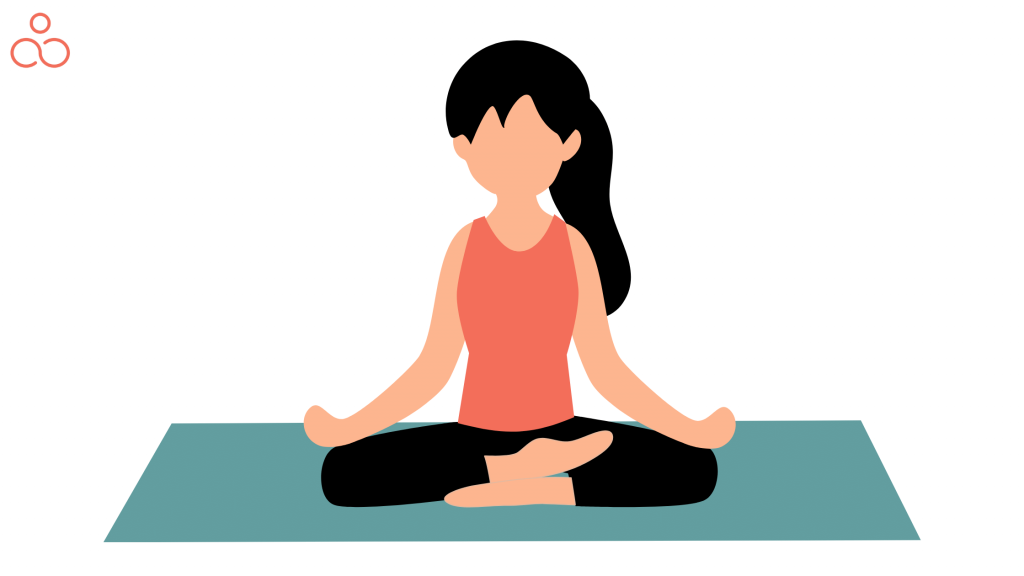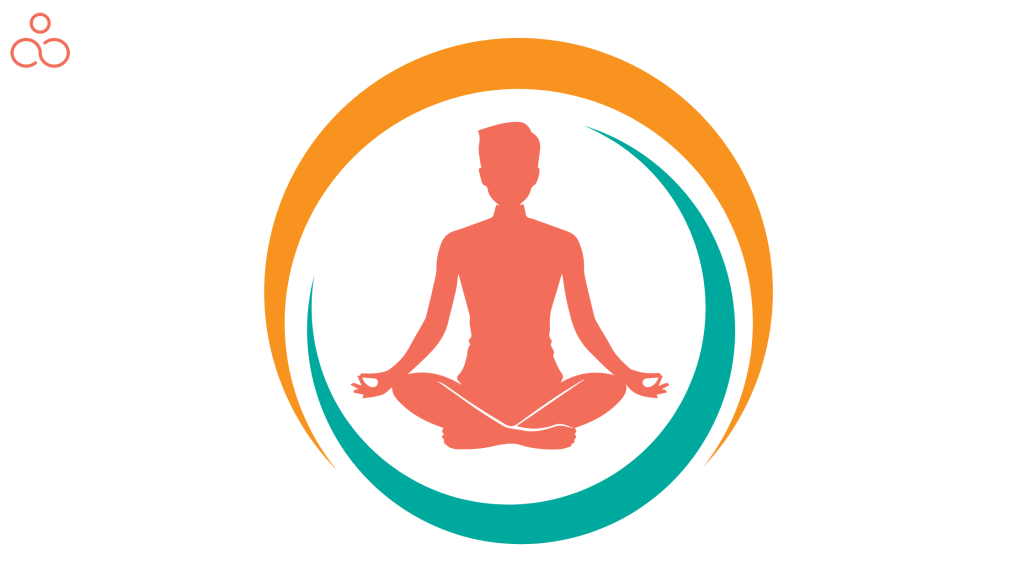Unleash Your Inner Spiritual Power With Kriya Yoga. Here, we won’t just talk about abstract ideas but will help those dedicated to getting closer to God by exploring the minute details of what a kriya in Yoga is. Let’s dive in and uncover the details below to experience divine connection.
What is a kriya in Yoga?

Kriya Yoga is often called “Yoga of Activity” or “Consciousness”. It is an ancient practice that combines pranayama (breath work), mantra (chanting), and mudras (spiritual hand gestures) to foster rapid spiritual growth. The final goal of a kriya practice is to reach spiritual enlightenment or awakening (also known as Samadhi). Kriya is a set of rules, mostly breath control exercises, to achieve a particular aim. “Kriya” is a Sanskrit word that means “action”. Different types of Kriya are used in Kundalini Yoga, including breathing techniques, sound, and postures. Each Kriya is designed to bring about specific outcomes and has precise instructions, such as the time to hold each position, the eye contact to be made, and the breath technique to be used. The sequence of each Kriya is meant to cause minor yet direct changes to the body and mind of the practitioner. Kriya Yoga has more advantages than other forms of meditation, as it works directly with the source responsible for your spiritual growth, which resides deep in your spine. Whereas other methods work with more indirect paths of your energy, kriya Yoga techniques draw power directly from your spine. When performing various types of kriya Yoga, you will attract the energy up and down your spine with heightened awareness. Kriya Yoga can have a major effect on our lives in two primary ways. Let us explore these effects further.
Kriya Yoga: An unique spiritual way of life
Kriya Yoga is a powerful and deeply spiritual practice that can be an integral part of someone’s life. It requires dedication, precision, trust, discipline and vulnerability to gain the most out of its teachings. It is a challenging path and is not suitable for those who are used to a comfortable upbringing and ask too many logical questions. For Kriya to be imprinted in one’s system, they must be open to the experience and willing to surrender to the teacher. By following Kriya Yoga, one will be able to access higher levels of consciousness and receive spiritual gifts.
Kriya Yoga: An unique way of of living
Kriya Yoga offers transcendence beyond the physical world, a path that leads to liberation and mastery of your life. It requires devotion and dedication, and can take multiple lifetimes with independent practice, but with the right teacher, you can get there much quicker. Those who have gone through the Kriya path have a unique energy about them, as they gain control over the fundamentals of life. Other paths such as Gnana, Bhakti, and Karma Yoga can help you gain mental strength, but Kriya is the only path that allows complete control over your energy.
Origin of kriya Yoga
The practice of Kriya Yoga was kept a secret for centuries until it was re-introduced in 1861. Mahavatar Babaji, a renowned yogi, taught the technique to his follower Lahiri Mahasaya during their time together in the Himalayas. Kriya Yoga has been passed on through an extensive line of spiritual masters. Paramhansa Yogananda allowed his scholar, Swami Kriyananda (who founded Ananda), to initiate qualified people into Kriya Yoga.
Unlock Inner Calm with Kriya Yoga — Step by Step Guide

Kriya Yoga may sound easy, but getting the technique right requires guidance. It’s best to learn from a certified instructor who can show you the correct way to do it. If you are looking to practice kriya Yoga pranayama, here’s what you need to do:
- Start off by getting comfy.
- On the floor or a low stool, ensure your knees are lower than your pelvis.
- Place your arms wherever you feel comfortable.
- In traditional terms, having them in the lotus position with your fingers intertwined and thumbs gently touching is suggested.
- Keep your spine straight, and let relaxation and calmness come over your body and mind.
- Close or lower your eyes to the ground and focus on one particular spot.
- Take the next 5 minutes to let your body relax further.
- Wherever you find ease and peace, focus on that.
- Let any thoughts float by without attaching to them.
- This kriya should be done for 20 minutes; however, as you get used to it, you can increase the time.
Benefits of kriya Yoga

Kriya Yoga is a great way to bring balance and harmony to your life! If you’re seeking a comprehensive approach to overall well-being, this practice can provide you with many unique benefits. Let’s look at what incorporating kriya Yoga into your daily routine can do for your health and well-being.
Eliminates negative emotions
This is a highly sought-after outcome of kriya Yoga. Through various breathing exercises that are part of this type of Yoga, practitioners learn to focus on the patterns of negative emotions, comprehend them, and accept them. This helps to create a space where thoughts can flow without causing unrest, which leads to a more positive mindset.
Increases concentration
Kriya Yoga involves you concentrating on a single idea or location for an extended period, allowing you to strengthen your ability to concentrate and become more proficient in your tasks.
Provides spiritual tranquility
Kriya Yoga is practiced by many people for its spiritual advantages. This kriya process facilitates the development of a spiritual state of mind by forming an attentive and peaceful atmosphere. Additionally, it shows you how to become one with the spirit. It also encourages us to be more caring and understanding towards not only other people but also ourselves.
Awakens Kundalini energy
Releasing blocked energy in your chakras can help you reap physical and mental health benefits. This can reduce fatigue and tiredness caused by blocked energy in your body. Awakening the Kundalini energy (a form of divine feminine energy believed to be located at the base of the spine) at the bottom of your spine can also be beneficial. Other advantages of cleansing your chakras include enhanced focus, improved energy levels, and improved blood circulation throughout the body.
Brings closer towards God
Those who earnestly practice the Kriya technique, even for a short time, discover the potency of their prayer is multiplied, tripled, or even a hundredfold stronger. When one enters the inner holy place of quietness and worships the altar of God with supplication and invitation of His existence, He comes without delay. As the awareness is extracted from the physical surface of the body and its environment and focused on the brain and spinal cord chambers of spiritual realization, this is the most effective time to pray.
Improves intellectual growth
Kriya Yoga can help foster intellectual and personal growth. Improved blood circulation to the brain translates to increased alertness and a sharper mind. Additionally, regular meditation helps to cultivate a positive attitude and greater self-awareness.
Increases control over thoughts
Kriya Yoga can help strengthen our mental focus and clarity, allowing us to control our thoughts and emotions better. Taking deep breaths while focusing on the body’s natural rhythms helps bring oxygen into the system, which can then support the nourishment and regeneration of our brain cells. In this way, practicing Kriya Yoga can help improve our memory.
Increases immunity
Its loyal adherents believe this ancient healing practice has remarkable medicinal properties. It can instantly purify and energize the physical body, mental state, and spiritual well-being. Practicing Kriya Yoga frequently makes it much easier to combat diseases as it allows the individual to fight illnesses from the inside out. Additionally, it helps to slow down the process of aging.
6 kriyas for purification

The 6 Yoga Kriyas, or Shat Kriya or Shat Karma, are outlined in the Hatha Yoga Pradipika (a branch of Yoga that purifies the body through asana). They are purifying techniques that are excellent for boosting immunity. These Kriyas are intended to remove any impurities, get rid of toxins and prepare the body for the flow of Prana. Our internal organs comprise eleven systems, including the circulatory, respiratory, digestive, excretory, nervous and endocrine. It is essential to cleanse these organs to ensure the body and mind is healthy and free from illnesses. Kriyas are like the building blocks of Yoga, assisting in creating heightened awareness beyond the physical level. They should be practiced before pranayama, asana, mudra or meditation – kriyas are essential preparations. These six kriyas help to totally detoxify the alimentary canal from the mouth to the anus.
Dhouti kriya (Cleansing Exercise)
It is a technique used to cleanse the mouth and food pipe. It follows Nauli Shatkriya and helps flush out obstacles and toxins from the intestine. The Kriya can be carried out in three ways: Jala Dhouti, Vastra Dhouti and Danda Dhouti. Anyone struggling with constipation, gastric issues, bile disorders, renal problems, and even liver worms can benefit from Dhouti Kriya. Plus, if you’re looking to tone your stomach, this Kriya is definitely worth a shot!
How to do it
Step 1: Grab two liters of warm water (just a bit over body temperature is perfect, around 40°).
Step 2: Stir in a teaspoon of salt.
Step 3: Stand up, take big gulps of the water, and quickly finish it.
Step 4: Place your left hand on your lower stomach
Step 5: Place your right hand’s index and middle fingers near the back of your throat.
Step 6: Gently push to trigger a gag reflex and get the salt water down.
Basti Kriya (Lower Abdominal Cleansing Exercise)
It uses the lower abdomen to cleanse the large intestine. The core is divided into three parts – upper, middle and lower abdomen. Basti kriya is used to purify the lower abdomen, including the pelvic zone and bladder. This method is called ‘Yogic Enema’, as it cleans out any impurities from the colon. It can be beneficial for curing urinary disorders and digestive flaws and treating irregular bowels. Plus, it’s known to help with diseases like flatulence and bile. In addition, this shatkriya tones the muscles in the lower abdomen.
How to do it
Step 1: Take a stand in a body of pure water, ensuring the water level is at your navel.
Step 2: Bend forward and take a seat on your knees.
Step 3: Contract and expand your anal sphincter muscles while performing Uddhiyana Bandha (pulling the abdomen in and up toward the rib cage) and Nauli Kriya.
Step 4: Draw the water into your bowels as you perform these two exercises.
Step 5: Hold the water in your bowels for a few moments and let it out of your anus.
Step 6: This completes one cycle. Depending on your comfort level, you may repeat the cycle 3-5 times.
Neti Kriya (Nasal Cleansing Exercise)
It is a practice of unclogging the nasal passages. Neti Kriya is a cleansing process of the nasal passage and nostrils. You can choose from four different tools to perform the Kriya – Water (Jal), Thread (Sutra), Milk (Dugdha), and Ghee (Ghrita). This Kriya style helps you eliminate muscular tension and make your face look more youthful. It also helps combat anxiety, depression, and other types of mental congestion. Plus, it balances your entire nervous system. So, if you want to turn the clock back and feel more relaxed, give Neti Kriya a try!
How to do it
Step 1: Start off by filling your neti pot with a solution of warm, salted water. Make sure you’re standing up straight and leaning forward a bit.
Step 2: Tilt your head to one side and begin breathing through your mouth. It’s essential to never live through your nose during the neti process.
Step 3: Gently place the nozzle of the neti pot into your nostril. This is to ensure that no water leaks out.
Step 4: Keep your mouth open and tilt the neti pot so the salt water will flow through one nostril and out through the other.
Step 5: The neti pot should be kept at a 45-degree angle. When the pot is empty, switch nostrils and do the same process.
Step 6: After completing the neti process, gently expel any remaining water from your nose.
Nauli Kriya (Isolation Of The Belly)
It strengthens the abdominal organs. Nauli is a critical kriya used to cleanse and strengthen the stomach and its internals. This practice is essential to energize the digestive system while clearing it out completely.
How to do it:
Step 1: Start standing and place your hands on your thighs.
Step 2: Bend your knees, exhale every air out of your lungs, and pause.
Step 3: Let your belly relax, but don’t inhale yet.
Step 4: Swallow and wait until you feel the muscles in your throat tightening.
Step 5: Now, imagine taking a deep breath and holding it.
Step 6: Keep your mouth closed, and your throat contracted.
Kapalbhati Kriya (Skull Shining Breath)
It is an exercise to cleanse the frontal area of the brain. The Kapalnbhati kriya is a powerful breathing technique that can help to purify your mind and enhance your mental well-being. Kapalbhati is a combination of two words – Kapal, which means ‘skull and the organs connected to it’ and bhati, which means ‘glow, sheen and luminosity’. This means that it can help to regenerate and cleanse your brain cells, enabling you to think more clearly. Additionally, it can detoxify your lymphatic system and clear any respiratory blockages. Remember, when practicing Kapalbhati kriya; try to stay within 150-200 repetitions.
How to do it
Step 1: Take a seat and keep your back straight then lift your arms up to the sky, being sure to be comfortable.
Step 2: Take a deep breath in. As you exhale, draw your stomach inward. Squeeze your belly so that it touches your spine.
Step 3: Push as much as you can. You can feel your abdominal muscles contracting if you place one hand on your stomach. Pull your navel inward.
Step 4: As soon as you relax your stomach muscles, your breath will enter your lungs.
Step 5: To complete one cycle of Kapalabhati Pranayama, exhale 20 breaths.
Step 6: After the cycle, take a break and close your eyes. Feel the energy of pranayama throughout your body. Do two more rounds of Kapalabhati Pranayama.
Trataka Kriya (Eye Exercise)
It is a way to purify the eyes. Suppose you want to figure out how to improve your vision and focus. In that case, suggest you try Trataka kriya – a powerful Yoga practice promoting good ideas and mental clarity. Two types of Trataka exist – Jatra and Jyoti. Both involve staring at a fixed point without blinking while keeping your eyes relaxed. This helps cleanse your visual system and stimulate your tear glands. Get started today and experience the benefits of Trataka!
How to do it
Step 1: Take a seat in the meditation posture.
Step 2: Place a candle in front of you.
Step 3: Gaze at the flame without blinking, then close your eyes.
Step 4: Do this a few times.
Step 5: Gradually increase the duration of your practice.
Step 6: Alternatively, you can perform Trataka by staring at a white dot on a black background or a black dot on a white background.
FAQs
What is kriya in kundalini Yoga?
Kundalini Yoga has something called kriyas, which are a set of body movements and mental exercises designed to produce a certain result. These kriyas can help you support your liver, balance your hormones, and even get your pituitary gland working better. Basically, they give your body, mind, and spirit a tune-up!
What varieties of kriya Yoga are there? What is kriya in kundalini Yoga?
The 6 Yoga Kriyas are a set of cleansing techniques that provide complete purification of the body. These include Dhauti Kriya, Basti Kriya, Neti Kriya, Trataka Kriya, Nauli Kriya, and Kapalabhati Kriya. Each one has its own unique set of benefits, from helping to maintain optimal health to promoting a deeper connection between body and soul.
Can beginners do kriya Yoga?
Absolutely! Even if you’re a Yoga newbie, you can learn Kriya Yoga with some guidance and persistence. This powerful practice was once reserved for experienced Yoga masters, but now it’s open to all. So, grab your mat and get ready to reap the amazing benefits of Kriya Yoga!
What is the purpose of kriya Yoga?
Kriya Yoga is a practice that focuses on spiritual growth and expansion. Through mindful breathwork and meditation, practitioners can unlock the power of pranayama to further their spiritual journey and gain new insight into the Self. With dedication and commitment, you can experience accelerated spiritual growth and transformation.
Is kriya Yoga dangerous?
It is crucial to be conscious of the dangers of any practice without proper knowledge and preparation. Kriya Yoga, a powerful practice that allows you to interact directly with energy, involves hand gestures (mudras) and energy locks (bandhas). Learning the correct techniques with a skilled kriya Yoga teacher or mentor is best, as some kriyas depend on more complex practices. Before practicing, it is essential to prepare correctly and, afterwards, ground and assimilate the experience.
Is kriya Yoga the same as kundalini?
Kriya and Kundalini Yoga, termed the “Yoga of Awareness”, are different in terms of purpose. Kriya Yoga, first introduced by Paramahamsa Yogananda, is a style of Yoga focusing on spiritual growth. It involves pranayama techniques to control the breath and quicken the process of spiritual development. On the other hand, Kundalini Yoga pursues purifying the body and mind to attain a state of spiritual absorption.
Are there signs of spiritual progress?
Yes! A growing sense of well-being and security, calmness and joy, and liberation from bad habits can all be indications that spiritual progress is being made. Additionally, Paramahansa Yogananda once said perseverance is the key to spiritual success. Even if you don’t have tangible spiritual experiences, it doesn’t mean you aren’t making progress. It can be seen more in your daily conduct, thoughts, and actions than anything else.
Is it essential to have a living guru to learn Kriya Yoga?
The answer is yes. Paramhansa Yogananda appointed Swami Kriyananda to administer Kriya Yoga initiations, acting on his behalf. Additionally, Yogananda has granted a few Ananda teachers the same authority. Kriya’s initiation isn’t solely about the method. It’s a way of being changed by Yogananda’s influence and magnetism. Many individuals have felt this transformation after undergoing an Ananda Kriya initiation.
How quickly can you learn Kriya?
It’s hard to say exactly; it usually takes about a year, but this depends on each individual. Kriya Yoga isn’t just about achieving specific outer goals; it’s about transforming yourself from the inside out. Every technique needs to be fully integrated before you can move forward. This process can take longer for some people than others. Your instructors will work at your own pace; giving you the time and guidance you need to make real progress.
What are the 8 limbs of kriya Yoga?
Kriya Yoga is a spiritual practice that is all about self-discipline, self-study and self-surrender. Basically, it’s got 8 different ‘limbs’ which help you to remove any obstacles and gain direct knowledge of your spiritual self. The eight main limbs of kriya Yoga are: yama, niyama, asana, pranayama, pratyahara, dharana, dhyana and samadhi. Yama includes basic ethical rules, niyama involves additional ethical rules, asana refers to Yoga postures, pranayama is about controlling Prana through breathing, pratyahara is about detachment from the senses, dharana is a concentration practice, dhyana is about contemplation and meditation and samadhi is the highest meditative absorption state.
Conclusion
Kriya Yoga can be a transformative practice – with patience and compassion, you can tap into inner wisdom and increase your inner peace. It’s no longer a secret, so what’s stopping you? As the infinite spirit is within reach, gain access to what’s attainable in the mortal world and make the most of it.

